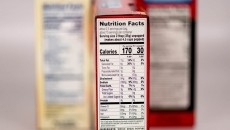Organic market shows signs of a slowdown
Although the number of consumers using organics increased from 55 percent to 73 percent between 2000 and 2006, there has been no notable change between 2006 and today, according to The Hartman Group report called The Many Faces of Organic 2008.
The results of a survey for the report showed a slight decrease in organic product use as 69 percent of consumers reported using organics this year, compared to 73 percent in 2006.
It concluded the findings “indicate that aggregate organic use patterns have basically remained the same since 2006”.
Shelley Balanko, VP ethnographic research, The Hartman Group, said that this means it is no longer the case that if food manufacturers make a product organic, consumers will buy it for that reason alone.
She added: “There is still a lot of opportunity to be found but food manufacturers now have to be a lot more judicial in where they put their innovation dollars into going organic.
“If manufacturers choose to explode the categories that are relevant to consumers they will be a lot more profitable rather than just going for cross-category, broad sweep organic innovation.”
She said that consumers are increasingly concerned about hormones and antibiotics in food, which adds to the appeal of organic dairy products, for example.
The report said that as we move through 2008, “beneath all the hyperbole about the dramatic growth of the organic market, rumblings of slowdowns in certain organic categories—or at least a suspected plateauing of overall organic sales—have begun to surface”.
It added: “A renaissance within the culture of food itself has brought increasing cultural focus on formerly fringe food categories, notably local and artisan products, as well as categories that may link by dotted lines to organics, but can also stand on their own (including fair trade, humane, cage free or free range).
“Another partial explanation is the suggestion that consumer interest is waning as “organic” comes to mean so many things to consumers that it represents no one thing for everyone.”
It said that generally organics are still an important cue to millions of consumers for products that contribute to healthy lifestyles, especially for children. However organic is now being included among “several symbolic distinctions of equal importance subsumed under the moniker of quality”.
Also, the concept of “fresh” products, while linked intrinsically in the minds of consumers to organics, has moved to the “forefront of importance for conventional consumers”.
However, this does not mean that the organic market is expiring as concerns for quality and health mean that consumers are drawn to fresh organic categories which offer the perceived benefits of being hormone or pesticide free. These include dairy, fruit, vegetables, prepared foods, meats, breads and juices.
The report added: “Manufacturers and retailers will have to develop specific understandings of those organic categories that consumers find relevant and those that they find uninteresting and even frivolous (eg organic truffles).
"Marketers focusing on organics will also have to understand that new organic product successes are still waiting to be developed, but these opportunities require an understanding of which types of consumers such products resonate with."
Organic sales
The Organic Trade Association (OTA) reports that US organic food sales have grown between 17 and 21 percent annually since 1997. That compares to between two and four percent growth for total US food sales during the same time period.
The OTA reported in 2007 that organic foods accounted for roughly 2.8 percent of food sales in 2006, its most recent data, reaching $16.7 billion and making up over 95 percent of all organic product sales.
More than two-thirds (69 percent) of US adult consumers buy organic products at least occasionally and about 28 percent of organic consumers (roughly 19 percent of the adult population) are weekly organic users.
The report said that the most significant motivators for organic usage are all related to consumer health - avoiding pesticides, growth hormones, antibiotics and genetically modified products.












